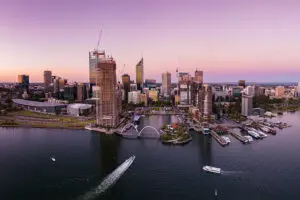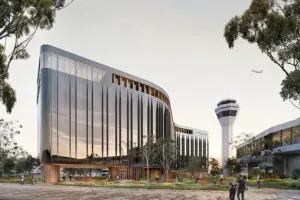The plan, called Destination 2045, projects visitor expenditure in Queensland will rise from $42 billion a year in 2025 to $84 billion in 2045.
Other projections include a doubling of the direct contribution of tourism to Queensland’s economy from $16 billion to $32 billion and another 34,000 people employed in the tourism industry.
Visitation goals within the strategy include 110.4 million domestic visitors per year and 5 million international visitors per year by 2045. In the year to December 2024, Queensland attracted 26.2 million domestic overnight visitors and 2.2 million international visitors.
The strategy has six pillars – ecotourism, events, connectivity, experiences, brand and industry.
In the events pillar, the government is looking to increase the value of public events in the state to $4 billion, $2 billion of which will come from regional Queensland, and to increase the value of business events held in the state to $2 billion.
To achieve the goal for public events, several initiatives have been laid out, including delivering a coordinated approach to events delivery and leveraging Brisbane’s status as an Olympic city, delivering a diverse events portfolio, nurturing a growth pathway for destination events and changing legislation to streamline major event delivery.
The government has indicated a new events fund will support the events pillar, which appears primarily aimed at public events.
For business events, it seems the road to $2 billion is paved with more of what is being done today – securing a high-value business events pipeline aligned to state government priorities.
For aviation, the state government is targeting 36.4 million domestic seats by 2045 and 11.3 million international seats. Another aviation fund was launched by the Queensland Government today to help achieve these goals.
Other goals outlined in the tourism strategy include delivering 45 new ecotourism projects by 2045 and stimulating more investment across a variety of areas in the tourism industry, including in accommodation, attractions and islands on the Great Barrier Reef.
An increased length of stay is also a target of Destination 2045, alongside Queensland being seen as Australia’s most desirable holiday destination in international markets.
In its industry pillar, the government is aiming to support at least 1,000 tourism operators each year through capability building.
The strategy is also seeking to cut red tape for the tourism and events industries, including streamlining permit processes, business support and government engagement with the tourism industry
“We are backing our industry to grow and innovate, with new funds to support events and connectivity, and streamlined regulation to allow our operators to do what they do best,” said Queensland’s tourism minister, Andrew Powell.
“As we look toward Brisbane 2032, this plan ensures we seize the moment to showcase our vibrant cities, pristine beaches and islands, lush rainforests, rich Indigenous cultures, proud heritage and our cherished way of life.”




















